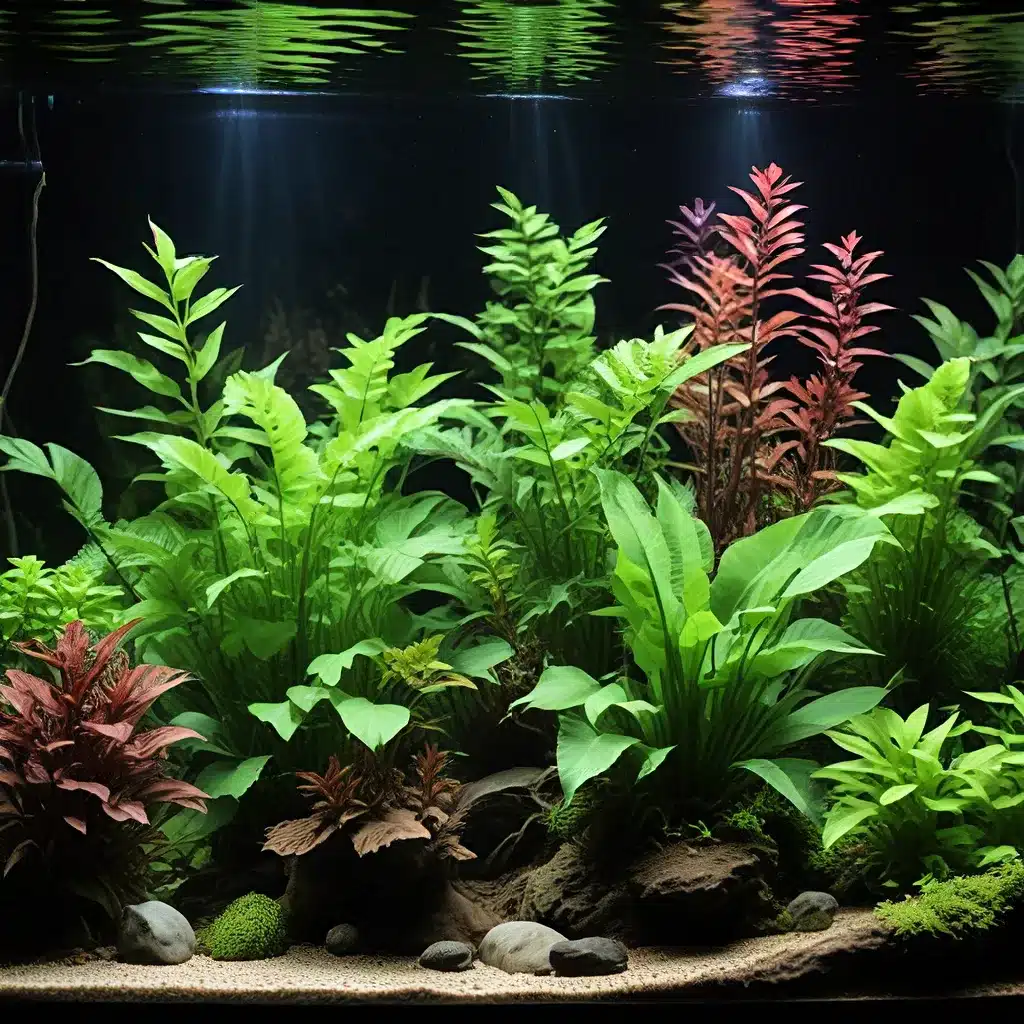
Unlocking the Power of Light for Aquatic Plant Flourishing
As aquarium enthusiasts, we understand the crucial role that lighting plays in the health and vitality of our aquatic plants. The right light spectrum can mean the difference between a lush, thriving underwater garden and a lackluster, struggling ecosystem. In this comprehensive guide, we’ll explore the science behind optimal aquarium plant lighting and uncover the secrets to achieving the perfect wavelengths for robust growth.
Diving into the Spectrum: Understanding the Importance of Light Quality
Aquatic plants, much like their terrestrial counterparts, rely on specific wavelengths of light to fuel the process of photosynthesis. This fundamental biological mechanism is the driving force behind their growth, color, and overall health. By understanding the various components of the light spectrum and how they impact plant development, we can make informed choices to create the ideal lighting conditions in our aquariums.
The visible light spectrum is typically divided into several key ranges, each with its own unique properties and effects on aquatic plants. The red and blue wavelengths, for instance, are known to be particularly crucial for plant growth and development. Red light, which falls in the 620-750 nanometer (nm) range, is responsible for stimulating stem elongation, flowering, and overall biomass production. In contrast, blue light, ranging from 400-500 nm, plays a vital role in leaf development, chlorophyll production, and the regulation of photosynthetic processes.
Balancing the Spectrum: Achieving the Perfect Light Blend
While the individual effects of red and blue light are well-documented, the true power lies in the synergistic relationship between these wavelengths. By carefully curating the right balance of red and blue light, we can create an optimal lighting environment that caters to the specific needs of our aquatic plants.
Recent studies have shown that a lighting spectrum with a 65,000 Kelvin (K) color temperature can provide the perfect blend of red and blue wavelengths for robust plant growth. This color temperature, often referred to as a “daylight” spectrum, mimics the natural sunlight that aquatic plants would experience in their native habitats.
But the story doesn’t end there. Aquarium enthusiasts should also consider the intensity and duration of their lighting, as these factors can significantly impact plant health and development. As a general rule, aquatic plants require a minimum of 6-8 hours of high-intensity lighting per day to thrive, with some species benefitting from even longer photoperiods.
Choosing the Right Lighting Solution
With a deeper understanding of the light spectrum and its influence on aquatic plants, the next step is to select the appropriate lighting solution for your aquarium. The market offers a wide range of options, from traditional fluorescent tubes to the increasingly popular LED fixtures.
Fluorescent lighting, while reliable and cost-effective, can struggle to provide the optimal red and blue light ratios required for robust plant growth. In contrast, LED lights have emerged as a versatile and highly customizable option, allowing aquarists to precisely control the intensity and color composition of the light spectrum.
When choosing an LED lighting system, it’s important to look for models that offer a broad spectrum of wavelengths, including a strong presence of red and blue light. Many high-quality LED fixtures also come equipped with built-in dimming capabilities, enabling you to fine-tune the light intensity to suit the specific needs of your aquarium inhabitants.
Adapting Your Lighting Strategy
As with any aspect of aquarium management, a one-size-fits-all approach to lighting is rarely effective. The optimal lighting solution for your aquarium will depend on a variety of factors, including the plant species you’re keeping, the size and depth of your tank, and the overall design goals for your aquascape.
It’s crucial to closely monitor your aquatic plants and make adjustments to your lighting as needed. Some species may thrive under a higher red or blue light ratio, while others may require a more balanced spectrum. By paying attention to the growth patterns, coloration, and overall health of your plants, you can fine-tune your lighting strategy to ensure their continued prosperity.
Additionally, consider the role of supplementary lighting in your aquarium. While a strong primary lighting system is essential, the strategic placement of accent lights or moonlighting can create depth, enhance the visual appeal of your aquascape, and provide additional lighting cues for your aquatic plants.
Embracing the Art of Aquascaping
The optimization of aquarium plant lighting is not just a practical consideration – it’s also an integral part of the art of aquascaping. By carefully manipulating the light spectrum, aquarists can shape the growth, color, and texture of their underwater landscapes, transforming their aquariums into true works of art.
Imagine a lush, vibrant carpet of red-hued aquarium plants contrasted by towering, verdant stems reaching towards the light. Or a stunning display of iridescent blues and greens, illuminated by the perfect blend of wavelengths. The possibilities are endless when you harness the power of light to bring your aquascaping vision to life.
Remember, the journey of aquarium plant lighting optimization is an ongoing process, one that requires patience, experimentation, and a deep appreciation for the intricate dance between light and life. By embracing this challenge, you’ll not only cultivate a thriving underwater ecosystem but also unlock the true artistic potential of your aquarium.

